 Happy St. Patrick’s Day! My recently released, curated collection of fiddle tunes is currently on sale at Amazon. You can also grab a PDF copy right away via download purchase.
Happy St. Patrick’s Day! My recently released, curated collection of fiddle tunes is currently on sale at Amazon. You can also grab a PDF copy right away via download purchase.
 I put together this Fiddle Fundamentals Folio book to answer the question: “Why play etudes when you can play fiddle tunes?” Introducing fiddle tunes into students’ (or your own) etude practice builds finger dexterity, bowing agility, and sight reading skills while also being FUN! I collected 40 toe-tapping traditional fiddle tunes and arranged them by key signature and sequential difficulty, from beginning to advanced levels. First-position-only tunes can be played slow to fast while focusing on the following technical skills:
I put together this Fiddle Fundamentals Folio book to answer the question: “Why play etudes when you can play fiddle tunes?” Introducing fiddle tunes into students’ (or your own) etude practice builds finger dexterity, bowing agility, and sight reading skills while also being FUN! I collected 40 toe-tapping traditional fiddle tunes and arranged them by key signature and sequential difficulty, from beginning to advanced levels. First-position-only tunes can be played slow to fast while focusing on the following technical skills:
Finger Dexterity: Fiddle tunes require rapid finger action on one or two strings. Ornamentations increase the speed of finger dropping-and-lifting and can train a light, tension-free touch. Students can learn preparatory double-stop technique through the focus on “quiet fingers” that stay put as long as possible. Guidance for turning tunes into finger exercises will get fingers flying faster and more accurately in no time!
Bowing Agility: Use fiddle tunes to focus on left side/right side coordination. The characteristic rapid string changes and off-beat slurs call for a relaxed, flexible technique and mindset.
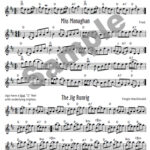 Sightreading: Fiddle tunes can be deceptively simple to play at sight. The trick is in maintaining full-speed tempos, bowings, and ornaments while always reading at least one note ahead. The 40 tunes in this book will provide lots of fresh music to play, and resources are included to find even more.
Sightreading: Fiddle tunes can be deceptively simple to play at sight. The trick is in maintaining full-speed tempos, bowings, and ornaments while always reading at least one note ahead. The 40 tunes in this book will provide lots of fresh music to play, and resources are included to find even more.
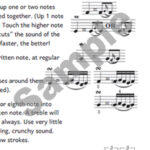 Improvisation: Traditional techniques for adding slurs and ornaments allow the musician to play a tune differently each time. Preparatory scales and arpeggios are provided for each key, with introductory chord theory and chords for every tune, to help bridge players towards harmonic and chordal improvisation.
Improvisation: Traditional techniques for adding slurs and ornaments allow the musician to play a tune differently each time. Preparatory scales and arpeggios are provided for each key, with introductory chord theory and chords for every tune, to help bridge players towards harmonic and chordal improvisation.
Here’s the table of contents.
If you can’t wait to get your hands on some tunes to play this weekend, you can purchase a PDF copy below. It doesn’t have a fancy cover like the book you can buy on Amazon, but the inside looks exactly the same! I would love to hear your comments after you’ve used the book! Sláinte!
or Purchase bound book version on Amazon
 (Hey! If your taste tends more towards the classical, you might be interested in my Orchestral Excerpts for Intermediate Violinists book for a different approach to non-traditional etudes!)
(Hey! If your taste tends more towards the classical, you might be interested in my Orchestral Excerpts for Intermediate Violinists book for a different approach to non-traditional etudes!)
 “Seven Summits And Beyond” is a mountain-climbing theme that celebrates the indomitable spirit of the world’s greatest mountaineers. Living where I do in the Pacific Northwest, the familiar sight of Mount Rainier dominating the skyline is always breathtaking. Since it’s a training summit for prospective Everest climbers, it was the first “destination” for my students. The theme continues through the highest summits on each continent (the “7 Summits”) leading to Mt. Everest as #10. Students who completed more than 10 goals went on to “climb the 8000’ers” — the Himalayan peaks over 8000 meters high. Continue reading “Incentive Program Package #3: Seven Summits and Beyond”
“Seven Summits And Beyond” is a mountain-climbing theme that celebrates the indomitable spirit of the world’s greatest mountaineers. Living where I do in the Pacific Northwest, the familiar sight of Mount Rainier dominating the skyline is always breathtaking. Since it’s a training summit for prospective Everest climbers, it was the first “destination” for my students. The theme continues through the highest summits on each continent (the “7 Summits”) leading to Mt. Everest as #10. Students who completed more than 10 goals went on to “climb the 8000’ers” — the Himalayan peaks over 8000 meters high. Continue reading “Incentive Program Package #3: Seven Summits and Beyond” 
 Happy St. Patrick’s Day! My recently released, curated collection of fiddle tunes is currently
Happy St. Patrick’s Day! My recently released, curated collection of fiddle tunes is currently 



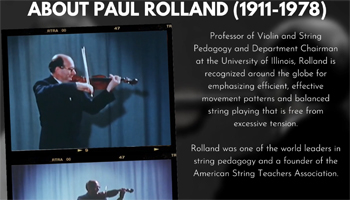 Over the holiday break from teaching, I finally completed a resolution for 2021: to rent and watch the Paul Rolland video series titled “
Over the holiday break from teaching, I finally completed a resolution for 2021: to rent and watch the Paul Rolland video series titled “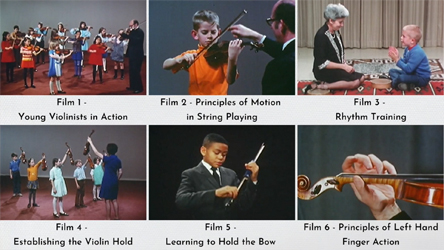
 Where
Where 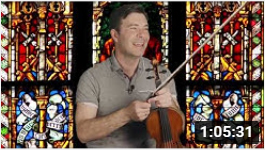 Nathan is First Associate Concertmaster of the Los Angeles Philharmonic and could clearly spend all his time just performing. But his passion for teaching has turned him into a YouTube pro. While joining his private student cohort is limited and pricey, he has posted many excellent free teaching videos, including a series on the complete Bach Unaccompanied Sonatas and Partitas for Violin. (He calls it
Nathan is First Associate Concertmaster of the Los Angeles Philharmonic and could clearly spend all his time just performing. But his passion for teaching has turned him into a YouTube pro. While joining his private student cohort is limited and pricey, he has posted many excellent free teaching videos, including a series on the complete Bach Unaccompanied Sonatas and Partitas for Violin. (He calls it 




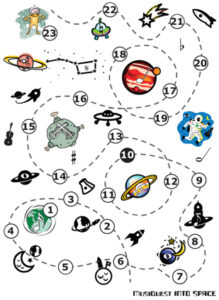 My second incentive program theme is literally Out Of This World! You could also call it Space, The Final Frontier; Into Space; or even Blast Off! I get ideas for my incentive programs from the variety of economy-priced awards I can purchase from
My second incentive program theme is literally Out Of This World! You could also call it Space, The Final Frontier; Into Space; or even Blast Off! I get ideas for my incentive programs from the variety of economy-priced awards I can purchase from